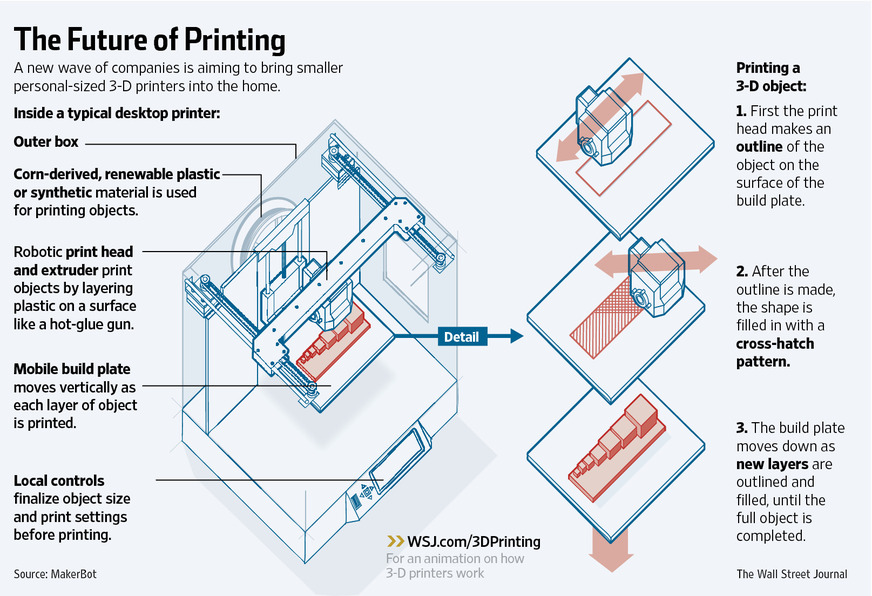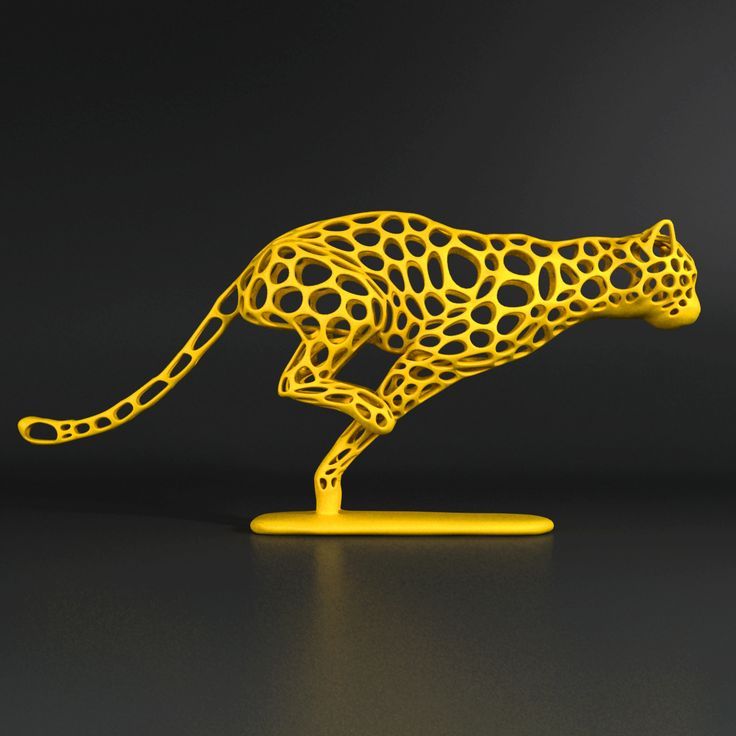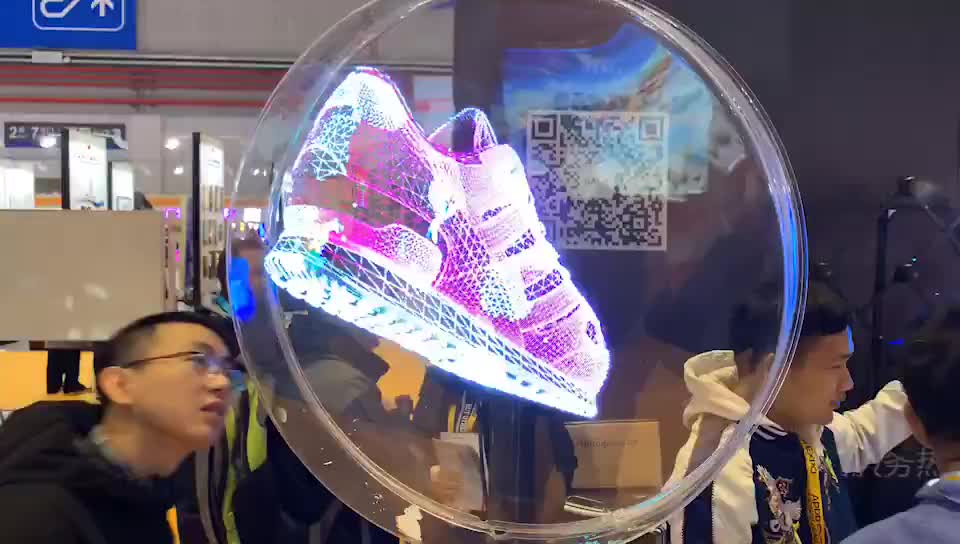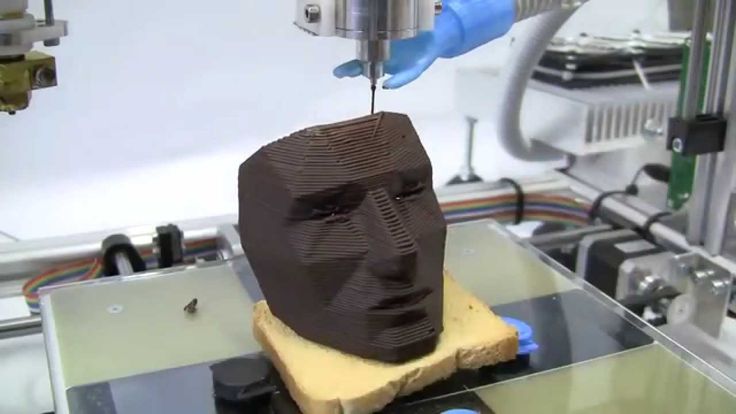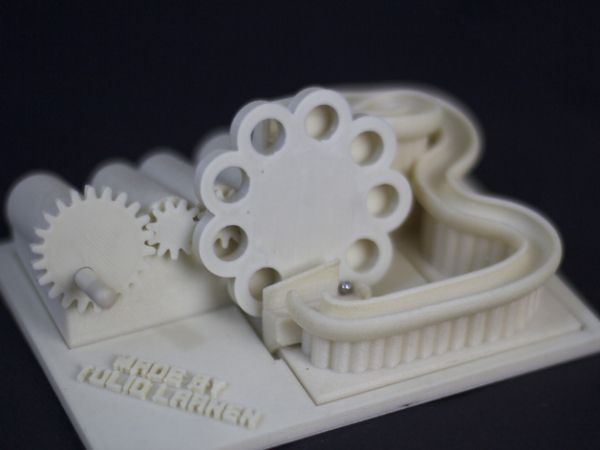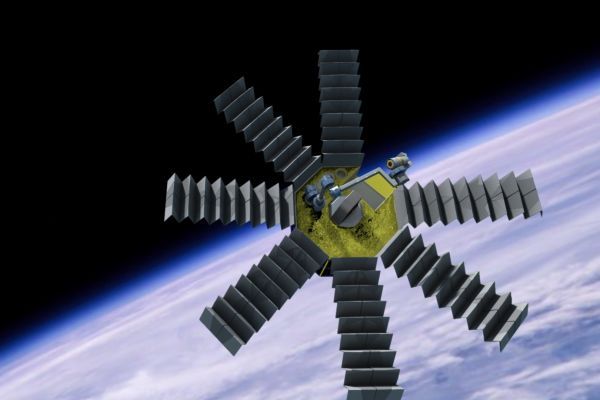How small can a 3d printer print
How Small Can a 3D Printer Print? – The 3D Bros
Printing small-scale 3D models with a 3D printer may be challenging because resolutions are not the same as the resolutions you use for two-dimensional pictures and for printing images on paper. Using your 3D printer in creating very small models or models with very fine features and details may involve a steep learning curve for new users. But as to how small your 3D printer can go, it depends mainly on its technology.
An FDM 3D printer can print 3D models as small as its nozzle diameter, which is at least 0.15 millimeters. Resin 3D printers like DLP and SLA can print much smaller details as it offers very fine Z resolutions. With resin printers, you can choose layer height options from 25 to 300 microns.
This article will discuss the differences in various types of 3D printers, especially in terms of their printing accuracy and their ability to print fine details. You will understand how their different 3D printing technologies and mechanisms affect the quality of their print output.
Most Common Types of 3D Printers
Different types of 3D printers use different printing technologies, processes, and materials, influencing their print accuracy and minimum feature size. The most common are:
- Fused deposition modeling (FDM) 3D printers, also known as fused filament fabrication (FFF) 3D printers
- Stereolithography (SLA) 3D printers
- Digital light processing (DLP) 3D printers
FDM/FFF 3D Printers
FDM or FFF 3D printers extrude thermoplastic filaments like polylactic acid (PLA) and acrylonitrile butadiene styrene (ABS) through a heated nozzle, which melts the plastic and applies layer upon layer of the molten material to create a form. The FDM printing process is widely used at the consumer level.
One advantage of using FDM is that three-dimensional printing models are easy. Once you calibrate your printer and upload your CAD file, the printing process begins with just a push of a button. FDM printing is also a speedy process, and the technology can cost-effectively print objects in low quantities.
However, FDM 3D printing is not known for turning in long-lasting and durable products because each one is created in multiple layers instead of a single piece. There are bound to be weak spots in applying the layering technique. Additionally, FDM’s thermoplastics cannot withstand extreme conditions, so they would melt or deform when exposed to hot environments and crack when exposed to cold.
FDM 3D printing is also not able to produce models at a fine resolution. Because of the layering method, the output tends to have rough edges and surfaces and may require sanding and other finishing to smoothen them out. The tolerances are larger, too, which could lead to multiple prints of similar parts having inconsistencies and significant differences.
SLA 3D Printers
Dental technician removing jaw model from a 3d printer at the laboratory, modeling frame for implant productionAn SLA 3D printer is a resin 3D printer that produces high-accuracy, watertight, and airtight prototypes and models in advanced plastic materials.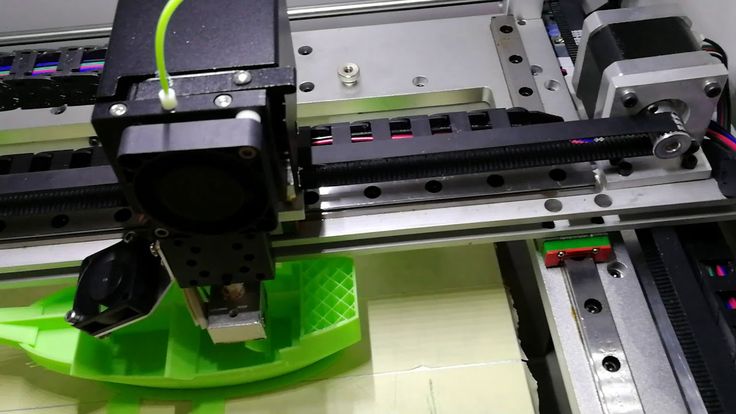 It is known to print 3D models with smooth surface finish, fine features, and highly detailed designs.
It is known to print 3D models with smooth surface finish, fine features, and highly detailed designs.
With a highly precise laser, an SLA 3D printer delivers light to form and cure thin layers of liquid resin that stack up to form one solid object. The process of curing resin into hardened plastic is called photopolymerization. SLA resin formulations boast a broad range of thermal, optical, and mechanical properties that make them ideal for industrial and engineering thermoplastics applications.
Using light instead of heat to print prototypes make SLA reliable. By printing three-dimensional parts at close to room temperature, you don’t have to worry about thermal expansion and contraction, which can be prevalent when printing via FDM.
These parts and prototype printing using the SLA process are also isotropic, which means that they have high lateral strength levels that don’t alter with orientation.
DLP 3D Printers
Like an SLA printer, a DLP 3D printer also uses resin. It creates parts and models upside down, layer by layer, as its build platform goes down into a resin tank. And while an SLA 3D printer uses a laser as its light source, a DLP 3D printer uses a digital projector screen. An image of a layer’s pattern or shape is flashed across the build platform, and this light cures the liquid resin.
It creates parts and models upside down, layer by layer, as its build platform goes down into a resin tank. And while an SLA 3D printer uses a laser as its light source, a DLP 3D printer uses a digital projector screen. An image of a layer’s pattern or shape is flashed across the build platform, and this light cures the liquid resin.
The light gets reflected onto microscopic-sized mirrors that are arranged on a semiconductor chip. This digital micromirror device (DMD), in turn, points the light to the bottom of the resin tank, defining the coordinates where the resin hardens in a particular layer.
DLP 3D printers are among the most precise and accurate 3D printers around, so they are great for highly detailed models. And like SLA printers, they create objects with a smooth surface finish.
How Small Can Your 3D Printer Print?
The different types of 3D printing technology have different minimum feature sizes.
How Small Can FDM 3D Printers Print?
FDM 3D printers can print features as small as the diameter of their printing nozzles. The most common nozzle size for these printers is 0.4 millimeters, so that means the smallest feature they can print is that same size, too. However, third-party nozzle upgrades are available. You can get a 0.15-millimeter nozzle and swap your printer’s old nozzle with it so you could print smaller features.
The most common nozzle size for these printers is 0.4 millimeters, so that means the smallest feature they can print is that same size, too. However, third-party nozzle upgrades are available. You can get a 0.15-millimeter nozzle and swap your printer’s old nozzle with it so you could print smaller features.
However, you have to keep in mind that how well a model or 3D figure turns out is also heavily influenced by its shape and the movements that the FDM printer needs to make to print it.
One major problem regarding printing small details with an FDM printer is that you have limited control over when the thermoplastic material starts to flow out from the nozzle and exactly when it stops. As such, an FDM printer will have an easier time creating fine details that are part of a larger object than creating a similar-sized detail on a much smaller object.
How Small Can SLA 3D Printers Print?
The minimum feature resolution for SLA 3D printers relies on the spot size of the laser beam. Because SLA technology does not involve thermal stresses like FDM, it is easier to print tall and thin shapes and very small features.
Because SLA technology does not involve thermal stresses like FDM, it is easier to print tall and thin shapes and very small features.
In 3D printing, you will need to get acquainted with the three dimensions: the X and Y dimensions, the two-dimensional planes, and the vertical Z dimension. The Z resolution is the thickness or height of a layer that the printer can produce.
The laser spot size of the SLA printer determines the XY resolution. The increments by which the laser beam is controlled also affects the XY resolution. As for the Z resolution, resin printers offer a layer height of between 25 to 300 microns.
How Small Can DLP 3D Printers Print?
Just like SLA printers, DLP printers offer a fine resolution. You can also pick a layer height option or Z resolution of anything between 25 and 300 microns. Meanwhile, the XY resolution is defined by pixel, which is the tiniest feature that the projector can print within a particular layer.
However, with DLP printers, there is a trade-off between build volume and resolution. The projector dictates the number of voxels or pixels available. The closer the projector is moved to the optical window, the smaller the pixels get, which increases the resolution of your print. As a result, the available build area also gets limited.
The projector dictates the number of voxels or pixels available. The closer the projector is moved to the optical window, the smaller the pixels get, which increases the resolution of your print. As a result, the available build area also gets limited.
Calibration also plays a crucial role. Unlike SLA printers with the same light source throughout, with DLP projectors, you will need to factor in the non-uniform distribution of light on the build platform and lenses’ optical distortion. This means that the pixels right in the middle of the print object are not of the same shape and size as the pixels on its edges.
Final Thoughts
Generally, SLA and DLP printers can print much smaller features and details than FDM printers. More importantly, SLA and DLP are known for more accurate, precise, and more durable prints of industrial and engineering quality. But that is not to say that FDM technology doesn’t have its own strengths. That is why thorough research needs to be done on the pros and cons of each of these types of 3D printers to know which one suits your specific printing requirements.
Sources
- MH Manufacturing: Benefits and Disadvantages to 3D Printing in Manufacturing
- Pinshape Blog: 4 Things You Need to Know About 3D Printing Resolution
- Quora: How small of an object can a 3D printer print?
- All3DP: How Small Can You Go?
- All3DP: SLA vs. DLP: The Differences – Simply Explained
- Dummies: How to Print Tiny or Highly Detailed 3D Objects
- 3D Printing: How small can I expect FDM 3d printers to print?
- Formlabs: FDM vs. SLA: Compare the Two Most Popular Types of 3D Printers
- Formlabs: SLA vs. DLP: Guide to Resin 3D Printers
- Xometry: What is the smallest feature that you can print?
- Make Parts Fast: What is a DLP 3D Printer?
How Small Of An Item Can A 3D Printer Make? – 3dprintscape.com
One of the most amazing things about 3D printers is that they are capable of creating things out of what seems to be nothing. This means that what they do is that they create different objects using a bottom-up approach by putting together different small particles.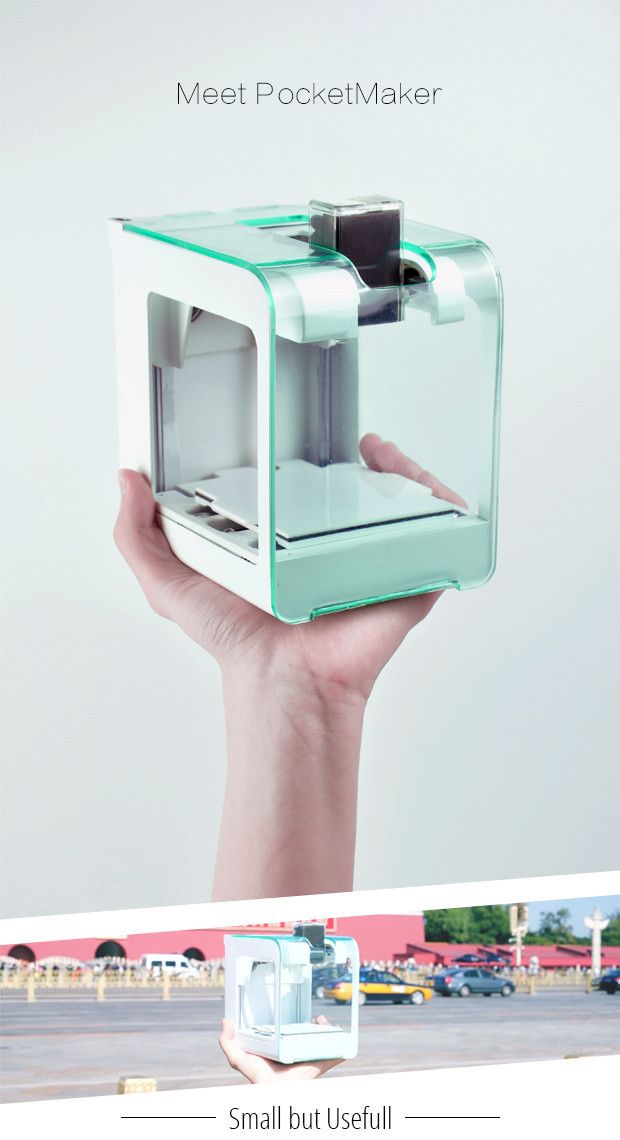 But how small of an item can a 3D printer actually print?
But how small of an item can a 3D printer actually print?
In most cases, 3D printers can print as small as their nozzles allow them to do so. Some 3D printers can print at least 0.15 millimeters. However, it usually really all depends on the manufacturing specifications of the 3D printer and the type of 3D printer we are talking about here.
3D printers come in all shapes and sizes, and that means that there are also different types of 3D printers. In that case, the smallest thing that 3D printers can print will mostly depend on how small the 3D printer’s nozzles or manufacturing capabilities are. And there are also cases where it can depend on the type of 3D printer that you have.
What are the different types of 3D printers?
3D printers are amazing in the sense that they use a bottom-up approach when it comes to creating different designs. What they do is that they put together smaller particles that form one bigger structure. However, what you should know is that different 3D printers work differently. So, if we are to talk about how small of an item a 3D printer can print, it is equally important to talk about the different types of 3D printers.
So, if we are to talk about how small of an item a 3D printer can print, it is equally important to talk about the different types of 3D printers.
FDM/FFF 3D Printers
Some of the most common types of 3D printers are FDM/FFF 3D printers. What these 3D printers do is that they extrude thermoplastic filaments through a heated nozzle so that the plastic material melts. In a sense, what happens is that these 3D printers put together small particles of heated plastic to create the form you want at the end of the 3D print job. This is the most common type of 3D printer in consumer markets.
The best part about FDM/FFF type of 3D printers is that they are very easy to use when creating three-dimensional printing models as you simply need to calibrate the machine and then upload your CAD file. From there, the printing process can be done with a simple push of a button. It’s that easy and speedy.
But the problem with these 3D printers is that they are not known for creating products that are quite durable because you need to know that what they do is that they put together several layers of plastic instead of printing one single piece.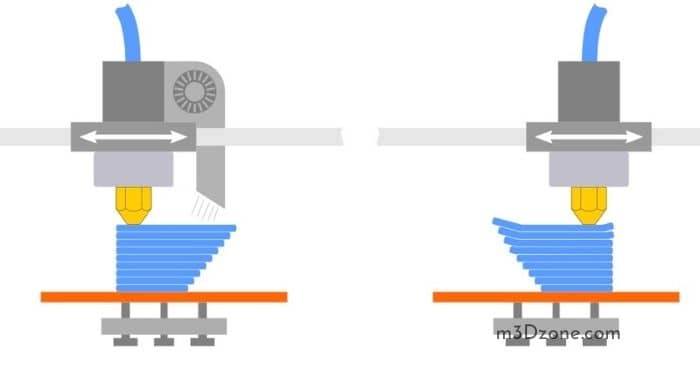 That means that there are going to be a few weak spots on the final product. Of course, you also need to consider that thermoplastics aren’t exactly the best when it comes to extreme conditions as they can easily melt or deform when exposed to heat or crack when exposed to cold.
That means that there are going to be a few weak spots on the final product. Of course, you also need to consider that thermoplastics aren’t exactly the best when it comes to extreme conditions as they can easily melt or deform when exposed to heat or crack when exposed to cold.
And, in connection to our topic, FDM 3D printers are unable to produce models at the smallest scale possible. That is because, as mentioned, they rely on a method of layering plastics together. That means that it might be difficult to produce a really small product using an FDM printer.
SLA 3D Printers
SLA 3D printers are resin 3D printers that use a method that is quite different from what FDM printers do. What these 3D printers do is that they produce high-accuracy and water and airtight 3D models using plastic materials. In most cases, they are more accurate than FDM 3D printers as they are capable of producing models with fine features and accurate details.
Using a precise laser, SLA printers are capable of creating accurate models as they deliver light to form and cure layers of resin. What happens is that these thin layers of resin stack up to one another to form one solid object.
What happens is that these thin layers of resin stack up to one another to form one solid object.
So, the difference here is that these 3D printers use light instead of heat to print 3D models. This is why SLA 3D printers are widely used in a lot of industries that require their pinpoint accuracy and detailed printing. And you don’t even have to worry about the resin warping or cracking because of how heat isn’t in the equation here.
DLP 3D Printers
DLP 3D printers are like SLA printers in the sense that they also use resin. What they do is that they create parts and models layer by layer from top to bottom. But the difference here is that DLP 3D printers use a digital projector screen instead of using laser as their light source. The image of the model’s shape or pattern is flashed, and this is the light that cures the liquid resin to form the 3D model.
What happens is that the light gets reflected onto very small mirrors that are microscopic in size. These mirrors are arranged on a semiconductor chip and will point the light to the bottom of the resin tank while defining the coordinates where the resin should harden to form the layers of the 3D model.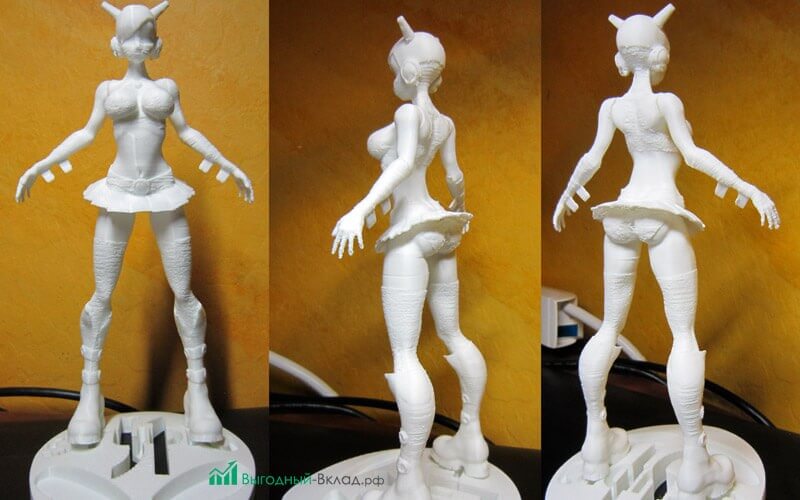
Because of the way DLP 3D printers work, they are considered some of the most precise and accurate 3D printers. They are so accurate that they are capable of printing fine details and even smaller objects that other types of 3D printers cannot print.
How small of an item can a 3D printer make?
Now that you know the different types of 3D printers, let us now look at how small of an item these 3D printers can make. And it is important to know how these 3D printers work because you need to understand that different methods of 3D printing can make big differences in how small of an item they can print.
FLM 3D printers, for the most part, are highly dependent on their nozzles in the sense that they can print as small as what the nozzles allow them to do so. In most cases, these 3D printers have nozzle sizes that are 0.4 millimeters, but it isn’t rare for some nozzles to be as small as 0.15 millimeters. You can even get a 0.15-millimeter and then swap out your old one for the newer and smaller nozzle so that you can 3D print smaller and more accurate features.
But the problem here is that, because FDM 3D printers rely on thermoplastic, you don’t have any control as to how the plastic flows out from the nozzle. This means that it would be very difficult to 3D print something that is as small as 0.4 millimeters.
Meanwhile, for SLA 3D printers, the size of the item will depend on the spot size of the laser beam. So, when the spot size is quite small, it would be easier for you to 3D print a model that is quite small. It will also be easier to print tall and thin shapes with amazingly accurate features using SLA 3D printers.
When dealing with SLA 3D printers, you need to know the X, Y, and Z dimensions. The laser spot size of the SLA printer is what determines the XY resolution of the 3D printer. Then, for the Z resolution, these printers can offer heights between 25 to 300 microns, and that means that you can 3D print smaller and finer models.
Finally, DLP printers are similar to SLA printers in the sense that they are capable of producing materials with amazing resolution and detail. The size of the 3D print will once again rely on the XYZ resolutions, but the difference here is that the XY resolution is defined by pixels, which are tiny spots that you can see on the projector.
The size of the 3D print will once again rely on the XYZ resolutions, but the difference here is that the XY resolution is defined by pixels, which are tiny spots that you can see on the projector.
So, in a way, both SLA and DLP 3D printers rely mainly on how the machines are calibrated and on the manufacturing settings of these printers. And the consensus is that SLA and DLP 3D printers are much more capable than commercialized FDM printers when producing smaller materials.
Related Articles
- What Is the Size Limitation of 3D Printing?
- Best 3D Printing Infill Pattern – Complete Details Inside!
- Why Is 3d Printing Slow?
- Do 3D Printers Use a Lot of Power? (The Numbers Inside)
- Create a Temperature Tower Using Cura – The Easy Way
- 3D Printing Blobs and Zits: Tips to Avoid Them
Make sure you check out our YouTube channel, and if you would like any additional details or have any questions, please leave a comment below. If you liked this article and want to read others click here.
If you liked this article and want to read others click here.
How to choose the nozzle size for a 3D printer? Pros and cons
3DPrintStory 3D printing process How to choose nozzle size for 3D printer? Pros and cons
When choosing your 3D printer, the nozzle size of your 3D printer may have been the last thing on your mind. This is a detail that is often overlooked. But depending on what you need to print, the wrong nozzle diameter can get in the way.
In this article, we'll take a look at the different 3D printer nozzle sizes and why you should consider this assembly, what materials it's made from, understand the relationship between nozzle size and layer height, and how to measure the actual nozzle diameter.
How does nozzle size affect 3D printing?
Nozzle diameter affects the extrusion width of the 3D printer line. This affects some elements of your model. If you are 3D printing for business (make a lot of orders), you need to make sure your extruder is feeding the right amount of material. If too much material is fed, then more filament is used than is actually required for successful 3D printing. Well, a smaller number can simply lead to marriage.
Or maybe you're printing different designs, some of them very detailed and intricate, and some more practical (like a replacement doorknob) that just needs to be printed quickly and with maximum durability.
In any case, you will need the correct setting to save time, material and ensure the normal quality of the 3D model.
There is no easy answer to what is the best nozzle size for a 3D printer. You need to weigh what you want to achieve and what elements of the 3D model are most important to you.
Depending on your 3D printer, the nozzle can be quite easily replaced (most of them are mounted on screws), and buying a package with different sizes will cost you a lot.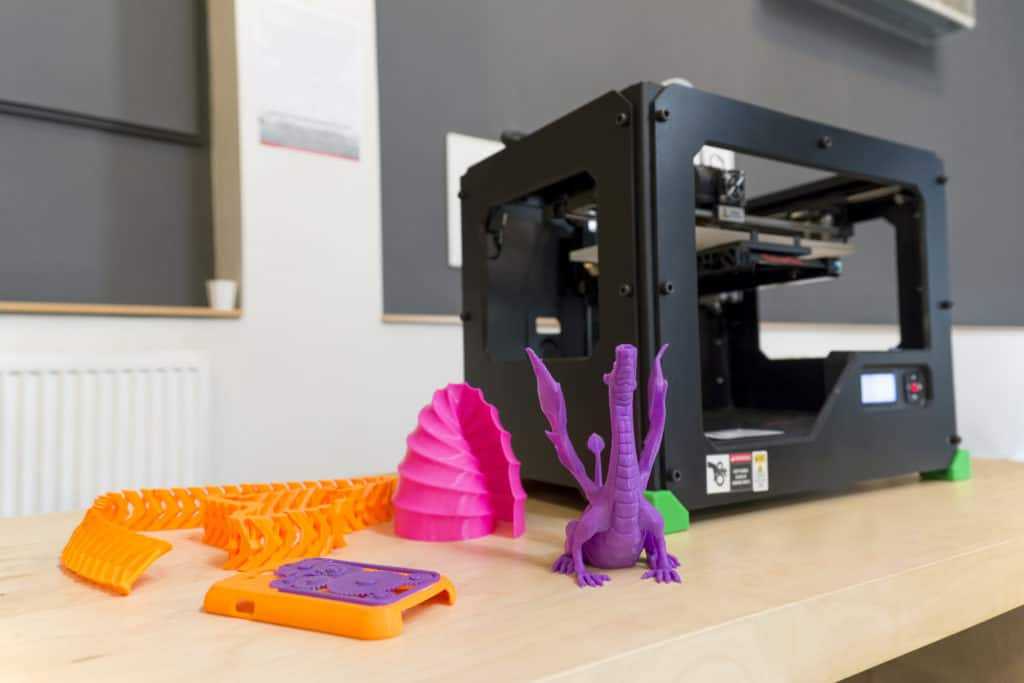
Most common 3D printer nozzle options
The most common standard nozzle size is the 0.4mm (or 0.35mm) nozzle used by most modern 3D printer manufacturers. The reason for this is that it is a rather large and yet versatile nozzle size. This means that you can print with exceptional detail in no time.
With the 0.4 mm 3D printing nozzle you can print up to a layer thickness of only 0.1 mm or up to 0.3 mm. The lower the layer height, the better the detail (on the Z axis) and the larger the layer height, the faster your 3D print will be, but with worse detail quality.
A common misconception is that if someone doesn't get good enough 3D print quality on their printer with a 0.4mm nozzle, they immediately think they need a smaller 3D print nozzle.
Another common smaller size is 0.25 mm. Some 3D printers offer 0.2mm, 0.15mm, and Mass Portal is even experimenting with 0.1mm 3D printer nozzles. And the experiments are really interesting. Thanks to this miniature nozzle, they were able to print the clock mechanism with excellent detail.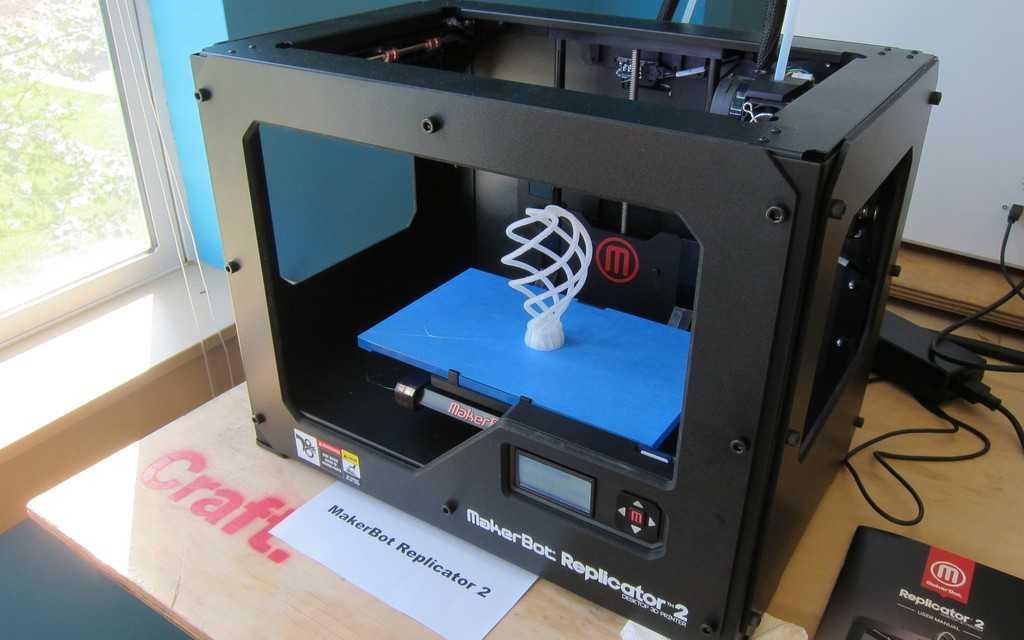
How is nozzle diameter related to 3D printer resolution?
Theoretically, smaller 3D printer nozzles allow for greater precision. But for many 3D printers, especially cheaper or older models, a smaller extruder nozzle won't necessarily make a difference if your printer doesn't support the higher resolution you need. It's like putting low-profile, high-performance tires on an old classic car - it doesn't make it go faster, and it doesn't necessarily make it better cornering.
This is also similar to how the specifications of a 3D printer on paper (eg advertised resolution) do not always result in the best print quality of the finished product. Just like Ultimaker and Zortrax have very similar resolutions on paper, but in many actual tests, Zortrax produces better models than Ultimaker 2.
smaller nozzles as resolution across the board is getting better every day.
Let's look at the pros and cons of 3D printing with smaller nozzles. Some are less obvious than others. Next, we'll look at the larger, underpriced nozzles available. I hope after reading this article you will be able to answer the question: "What nozzle size should I print?".
Next, we'll look at the larger, underpriced nozzles available. I hope after reading this article you will be able to answer the question: "What nozzle size should I print?".
You probably already guessed that the smaller the nozzle size in the extruder, the more detailed model you can get as a result of 3D printing. The thin nozzle is great for complex figures, or if you need to print very thin walls for aircraft skins, or high transparency models, etc.
The photo below shows the printed skin of a model aircraft, which was made with a standard 0.4 mm diameter nozzle. If the same skin is printed with a nozzle with a diameter of 0.2 mm, then the weight (and strength) would be halved.
It is worth noting that a 3D printer with a 0.2 mm nozzle feeds half as much material as a 0.4 mm nozzle. And this actually leads to an increase in print time by the same two times. It should be noted that strength and detail are reciprocals of time. So to get high-quality 3D models using a thin nozzle and high resolution, you will have to be patient (2 times more than when printing with a standard 0. 4 extruder :)). In some cases this is justified, in others it is a waste of time...
4 extruder :)). In some cases this is justified, in others it is a waste of time...
As a general rule, the smaller the nozzle size, the higher the chance of problems with the 3D printer. Especially if you are using cheap materials - they can work well with low models and thicker nozzles, but if you need detailed models that are printed using a thin nozzle, then you should also be puzzled by buying quality filaments for 3D printing.
Other factors are less obvious when 3D printing with a thin diameter nozzle - for example, protrusions can be problematic. This is because each layer has a smaller width for the next layer. Crossing bridges can also be difficult.
But there is good news too! Where overhangs form, the caliper material will be much easier to remove if printed with a thin nozzle. Due to the increased accuracy, your slicer can use a minimum amount of material between your model and supports, so they will break off more easily and have fewer damaged pads that need to be sanded.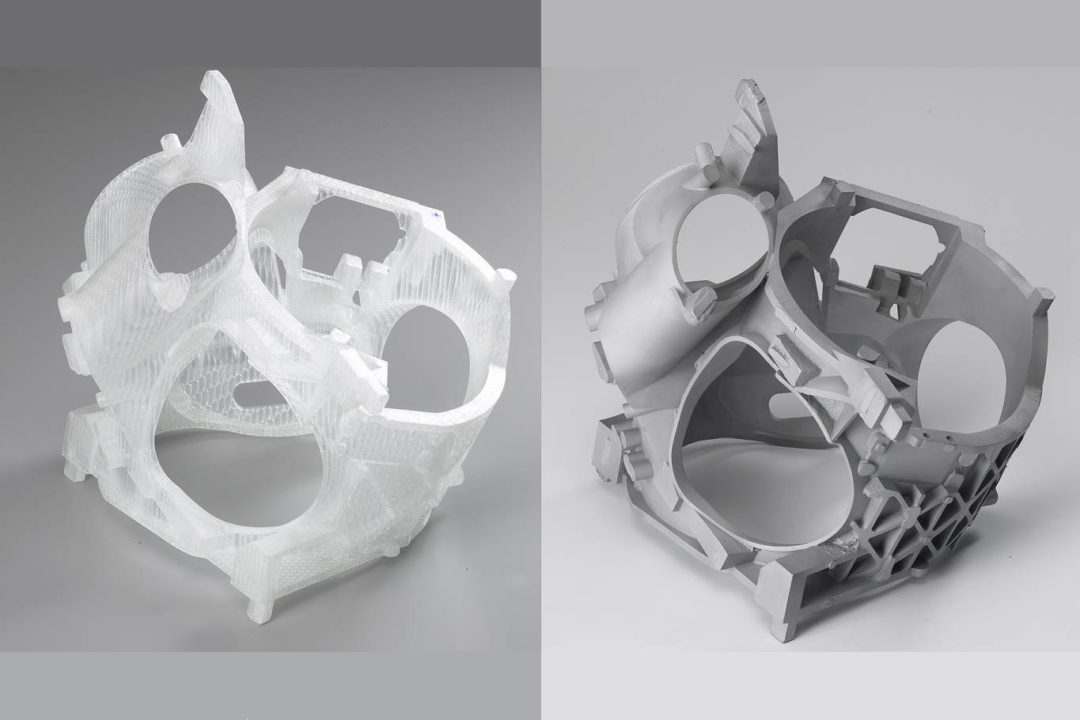
And finally, the most annoying thing about a thin nozzle is the ease with which it clogs. If you downsize to 0.2mm or even 0.1mm, you'll need a small particle to clog the hotend. You need to be very careful about the cleanliness of your 3D printing material and regularly clean the nozzle of your 3D printer. Otherwise, you will not end up with additional unnecessary problems.
It is also worth taking the time to understand the relationship between nozzle size and layer thickness. In short, the first parameter determines the horizontal detail (along the x and y axes), and the second adjusts the resolution along the vertical or z axis.
How to measure the nozzle size of a 3D printer?
Although the actual nozzle diameter should be engraved on the side of the nozzle, it is not always possible to read this value if it is already installed in the extruder or if you have been printing with it for some time. After all, there is the concept of wear and you may not be sure that the nozzle is the same size as before.
To determine what size your nozzle really is, very slowly extrude some material into the air (high speed may change shape or size) at the lowest setting you can feed material at (approximately 1 mm/s). Once cool, use a micrometer if you have one. They are generally more accurate than digital calipers. Keep in mind that the filament will probably expand after being extruded. Poor quality material or an extruder that is too hot (especially if you extrude at 1mm/s) will cause the material to expand more, resulting in inaccurate readings.
It can also be useful to know the size to which your material expands after extrusion if you are working on getting a really nice and accurate model. So feel free to experiment with higher speeds that are a bit more like your actual 3D printing.
What is the relationship between 3D print layer height and nozzle diameter?
In simple terms, this is the thickness of each line of extruded material that makes up each layer of your model. The thinner the layer height (or layer thickness), the finer the print detail in the Z-axis (the vertical dimension of your model), but the more layers will be required. Increases print time.
The thinner the layer height (or layer thickness), the finer the print detail in the Z-axis (the vertical dimension of your model), but the more layers will be required. Increases print time.
These characteristics are related, but not completely. For example, you can print using a thinner, thicker nozzle if vertical resolution is less important to you. Or you can use a thicker nozzle with a very small layer height. Although in this case, do not get too carried away. To maintain adequate pressure, your layer height should be at least 20% less than your nozzle width - and in most cases, for best 3D printing results, it should be around 50%.
How to determine the correct distance from the nozzle to the desktop of a 3D printer?
With the correct setting of the distance between the table and the nozzle, the base of the finished model should have an almost perfectly smooth, glassy surface. Many people assume that you need to use a stylus to properly set the distance between the nozzle and the 3D printer bed, but in fact, even that can be too thick.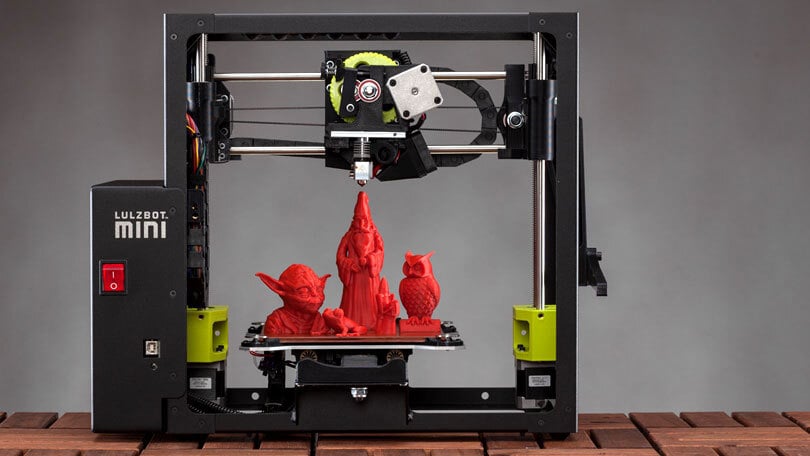 So it's worth thinking in the direction of the already proven table calibration with a piece of paper. You should use thin paper. For example, check paper is a great choice. Place the receipt paper under the nozzle and gradually lower the nozzle down until the receipt paper resists a little when you try to push it out. 3D printing at this height will give the bottom of the model a great look, and in the case of tall models, the print will definitely not go astray.
So it's worth thinking in the direction of the already proven table calibration with a piece of paper. You should use thin paper. For example, check paper is a great choice. Place the receipt paper under the nozzle and gradually lower the nozzle down until the receipt paper resists a little when you try to push it out. 3D printing at this height will give the bottom of the model a great look, and in the case of tall models, the print will definitely not go astray.
What is the maximum 3D print layer height compared to the nozzle size?
You don't necessarily need a layer height calculator on your 3D printer, but typically the maximum layer height is 50% of the nozzle width. In some cases, you can go higher (perhaps 75%), but in this case, you must be aware that you can sacrifice reliability.
It's best to experiment with the parameters of your model if you understand the relationship between the 3D printer's nozzle size and the layer height you'll be using to print. So for a 0.4mm nozzle, you will need to print with a layer height of 0.2mm, or up to 0.3mm. Your minimum should be around 0.1mm. If less, then in fact you just increase the waiting time without much benefit (on the same 0.4 mm nozzle).
So for a 0.4mm nozzle, you will need to print with a layer height of 0.2mm, or up to 0.3mm. Your minimum should be around 0.1mm. If less, then in fact you just increase the waiting time without much benefit (on the same 0.4 mm nozzle).
In most cases, it is worth printing thinner layers with smaller nozzle diameters and generally thicker layers with thicker nozzles. Just note that if you are printing with a thicker nozzle diameter and very thin layer height, you will need to lower the extrusion settings in your slicer to prevent overfeeding.
It's also worth noting that no matter the size, you should always make sure you always have a clean nozzle. One of the easiest ways to do this is to use a high quality cleaning floss. You only need to use a few grams of it each time you brush, but this will prevent carbon buildup over time.
So why should I use a 0.8mm nozzle or thicker?
Similar nozzle sizes were more common on older 3D printers but are making a comeback. It's all about using what you need and nothing more. For a large number of models, the 0.4mm headroom that your 3D printer probably comes with may be overkill in terms of detail.
It's all about using what you need and nothing more. For a large number of models, the 0.4mm headroom that your 3D printer probably comes with may be overkill in terms of detail.
If you need strength and speed, but detail is less important, then you should use a 0.8 mm or even 1.0 mm nozzle. And don't forget that models printed with a 0.8mm nozzle can be very detailed, as a lot depends on your 3D printer as well.
The only slight disadvantage may be that you use more material, but with thicker part walls you can probably compensate with less infill.
There is no single optimal nozzle size for all models, you just need to take all factors into account and decide which nozzle size is best for you.
What nozzle size should I use for composite materials?
It is worth noting that composite materials (any particulate filament such as wood filler, copper filler, carbon fiber nylon or glass reinforced nylon) will cause extrusion problems when using a thinner nozzle.
This is because these filaments contain particles which, although nanosized, can cause problems when passing through nozzles smaller than 0.4 mm. For composite materials, it is better to use nozzles of at least 0.5 mm, and for any metal, glass or carbon fiber materials, you will need a hardened nozzle. The brass nozzle that comes with your 3D printer will most likely not last long and will increase in diameter after a few hours of printing.
A 0.5 mm stainless steel or tungsten nozzle will last much longer for composite materials, but will, of course, be more expensive.
So, if you're still wondering "What size extruder nozzle to choose?", here are the results for a nozzle with a diameter smaller than the standard 0.4 mm:
- worth using for small detailed models if your 3D printer supports high resolution;
- 3D printing can take significantly longer, thicker nozzles can significantly reduce print time;
- overhangs are more difficult to print, but supports break off more easily;
- you need material from a quality proven manufacturer, otherwise the nozzle can easily become clogged.
8 nuances worth paying attention to / Sudo Null IT News
Sooner or later, everyone learns about 3D printing. And only a few lucky people, imbued with the opportunities that 3D printing opens up, catch themselves thinking that they want to purchase a 3D printer. The desire gradually develops into a serious decision and the search for the right option begins. And here the potential buyer is faced with the fact that he does not fully understand what to choose among the whole variety of 3D printers. We will try to answer this question in as much detail as possible.
What to pay attention to and how to make a choice? We want to offer a small checklist of the nuances that you need to pay attention to when choosing a 3D printer.
You need to decide for yourself what tasks you will use this technique for? What capabilities should a 3D printer have to solve your problems?
Point 1: Decide on a 3D printing technology
The first step is to decide on the technology of 3D printing. There are two main paths here.
There are two main paths here.
If you are faced with the task of manufacturing high-precision and miniature products, such as jewelry, then 3D printers using SLA or DLP technology are suitable for you. Such printers are specially designed for the manufacture of high-precision models. 3D printing in these printers occurs using a laser beam that illuminates the photopolymer resin. Hence the accuracy of the models.
Prominent representatives of this segment: Form 2 3D printer or B9Creator 3D printer
If you are faced with a wider range of tasks, and functionality, part size, and low manufacturing cost are more important, then an FDM printer will suit you. 3D printing on this equipment involves layer-by-layer melting of plastic.
If everything is clear for SLA printers. The scope of their application is jewelry, dentistry, high-precision prototypes of small parts. Then we will dwell on FDM printers in more detail. There is a lot more variety of different options for implementing printers.
Point 2: Evaluate your needs
Of course, you always want to get all the best and with maximum opportunities. Do you need all this to solve your current problems?
What can be an example? For example, the size of the working area of the FDM 3D printer. There are printers on the market with a large print area (1m x 1m x 1m), and with a very small one (100mm x 100mm x100mm). But for most tasks, a certain standard has already developed. This is the printable area within 200 x 200 x 200 mm. With slight fluctuations in size in one direction or another. Most 3D printers have exactly this size of the working area. This volume is enough to solve 95% of any tasks.
But options are possible...
If you are planning to produce small parts, then a smaller size may be enough for you. But if your work will be related to manufacturing, for example, a master model for casting, or large prototypes, then only then it makes sense to pay attention to a printer with a large print area.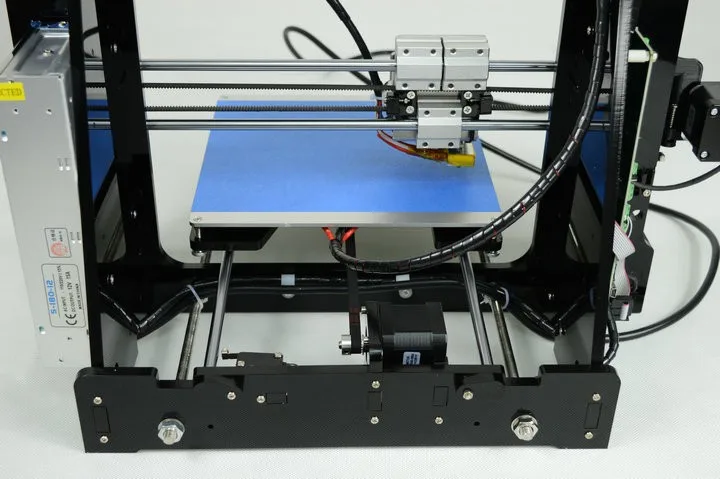
In other cases, the size of the printable area larger than the standard is nothing more than a nice bonus. But as they say, you have to pay for everything. Therefore, most often it makes sense to focus on the “standard” print area. And even if the part you need to print is larger than the working area of your 3D printer, you can always cut it in a special editor, and then print 2 parts of the model and glue them together.
Point 3: Decide on the complexity of the products
You should decide for yourself how complex models you will print on a 3D printer. If you plan to manufacture complex prototypes, or complex art models, then you need a 3D printer that can print with two materials. This is necessary so that your printer can print supports from soluble material. If the models are not the most complex, then you can get by with one extruder and save the budget. A complex model is a model with a large number of elements suspended in the air, or a model whose elements have angles greater than 30 degrees.
Tip 4: Decide on a list of materials to use.
Another important point. You must immediately determine for yourself a list of possible materials with which you are going to print. This primarily applies to materials with a high degree of shrinkage, such as ABS and Nylon. In order to print with such materials, a heated table is clearly required in a 3D printer. And it is very desirable to have a closed case to provide a thermal circuit around the model.
If you plan to print with PLA only. You don't need a heated table.
But still it is better that the printer has a heated table. Now the difference in the cost of printers with a heated table is practically the same as the cost without it. But you get a universal solution with which you can perform a full range of tasks facing a 3D printer.
One more thing. Possibility of printing with flexible materials.
Quite a number of 3D printers face the problem of printing with flexible materials. Of course, printing with various Flexes and Rubbers is very interesting at first glance. But the use of these materials in life is not very common.
Of course, printing with various Flexes and Rubbers is very interesting at first glance. But the use of these materials in life is not very common.
Usually, for most people, this happens like this:
A couple of models are printed, the understanding comes that this is not a fast and rather complicated process. And this is where the acquaintance with flexible materials ends. Therefore, it makes sense to demand such an opportunity from the printer if printing with such materials is very necessary.
Feature 5: Construction and kinematics
Next, you need to pay attention to the design of the 3D printer. Even if you are not a great specialist in technology, you can immediately see that some printers have an open design. And others are closed. As they like to be called in the Russian-speaking community "cubes". What does the appearance say?
Printers with an open design, usually have a kinematics with a horizontally moving table (based on Prusa 3D printers).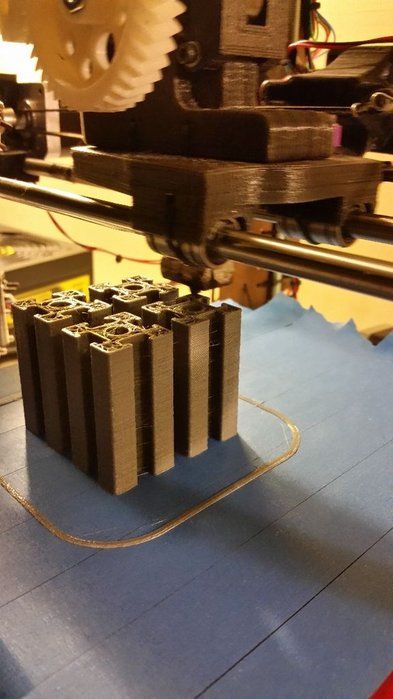 This kinematics has some inherent flaws. Such as, not the highest print speed and possible print quality problems associated with the complexity of the settings. First of all, this is the so-called wobble.
This kinematics has some inherent flaws. Such as, not the highest print speed and possible print quality problems associated with the complexity of the settings. First of all, this is the so-called wobble.
Also, the lack of a closed housing can cause print quality problems with high shrinkage plastics (ABS, Nylon).
The main advantage of printers of this design is their price. It is usually lower. But as you know, you have to pay for everything. In this case, the worst performance. The so-called "cubes" today, is the main design, which is represented by leading manufacturers on the market. Such printers are built according to the scheme with a lifting table. And they lack most of the shortcomings that are inherent in printers from the previous group. “Cubes” usually have a closed body, which allows the highest quality printing with plastics with a high degree of shrinkage.
Closed case printers are more rigid. This results in better quality printing.
Kinematics for moving the print head, available in various designs.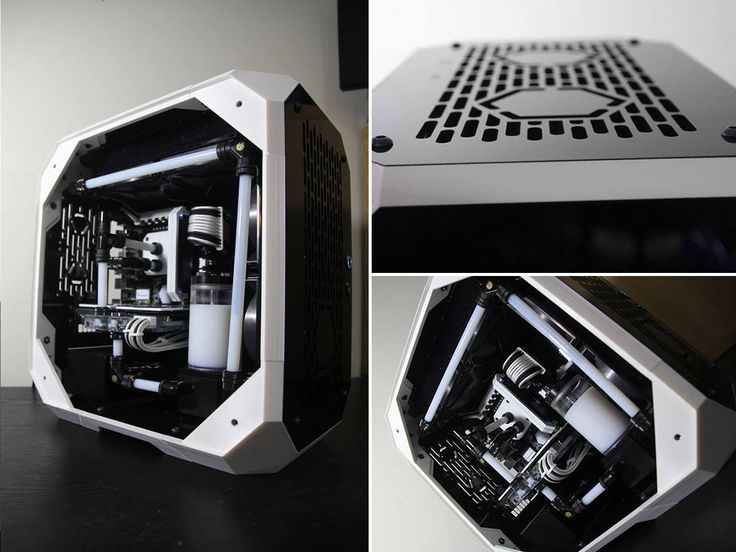 They have their pros and cons. But most of them have advantages over moving table printer circuits.
They have their pros and cons. But most of them have advantages over moving table printer circuits.
Feature 6: Diameter and changeable nozzle
Most 3D printers on the market come with 0.3-0.4mm nozzles. This is enough to solve the vast majority of tasks facing a 3D printer.
Some of the printers have the ability to install a nozzle of a different diameter, others do not. As we wrote above, the need to print with nozzles with a diameter other than 0.3-0.4 mm arises very infrequently. This mainly concerns, or personal experiments, or some very specific tasks. If you do not plan to do this, then this opportunity is not so necessary.
What do we mean by specific tasks?
This is especially true for large prints where it is important to reduce print times. This can be achieved by using large diameter nozzles. For example, with a diameter of 0.6-0.8 mm, or even a diameter of 1 mm. For printers with a large printable area, the ability to change nozzles is already a vital necessity.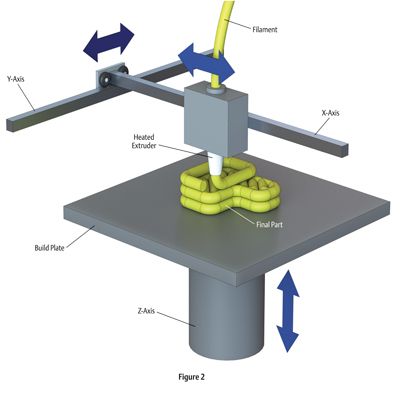
So, just like with the heated table, the ability to change nozzles is a nice bonus. It is not mandatory, but very useful if you do not have to pay extra for it.
Feature 7: Print thickness
It is important to understand that most models on a 3D printer are printed with a layer of 0.1-0.2 mm. These are the optimal values that allow you to achieve quality and acceptable print speed. There are a certain number of printers that allow you to print with a layer of less than 0.05 mm, and get very high quality prints. But then there is the problem of a sharp increase in print time. And if such print quality is important to you, then it probably makes sense to turn your attention to 3D printers, which we talked about at the very beginning of the article. These are 3D printers using SLA or DLP technology.
Point 8: Extruder type
Today there are two main types of extruder. This is a direct extruder in which the bar feed motor is located in the printhead itself. And the so-called Bowden extruder, where the plastic feed motor is located on the body. And the plastic itself is fed to the extruder through a fluoroplastic tube.
This is a direct extruder in which the bar feed motor is located in the printhead itself. And the so-called Bowden extruder, where the plastic feed motor is located on the body. And the plastic itself is fed to the extruder through a fluoroplastic tube.
What are the advantages and disadvantages of each type of extruder?
Bowden-extruder, due to the lack of a motor on the print head, has less weight. And therefore, it has greater positioning accuracy, which affects the print quality. And a higher speed of movement, which, accordingly, has a positive effect on the speed of printing. But it has one drawback. It is usually quite difficult to print with flexible plastics on a Bowden extruder. Such as Rubber or Flex.
This extruder reveals all its positive features when using plastic with a diameter of 2.85-3.00 mm. But this type of plastic is less common than the now standard plastic with a diameter of 1.75 mm. And therefore, users of printers with such plastic are often deprived of the opportunity to use new types of materials.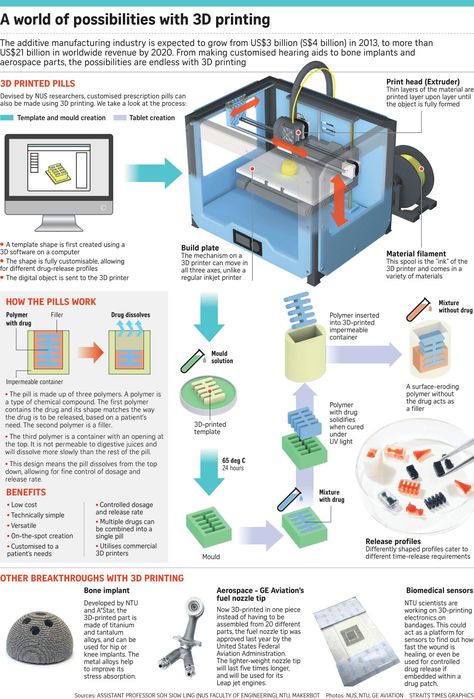 Which are primarily produced in the most common form factor of 1.75mm.
Which are primarily produced in the most common form factor of 1.75mm.
Direct extruder usually doesn't have such big problems with flexible plastics. Easier to set up, but due to the greater mass of the print head, it is inferior to the Bowden extruder in terms of speed and positioning accuracy.
Which do you prefer? This is the user's choice. We just wanted to talk about the pros and cons of these extruder types.
Of course, there are many more nuances when choosing a 3D printer. But we think that even our small list will force you to look and study some points that you may not have thought about more closely.
And will save you time and money when choosing a 3D printer.
3Dtool company has extensive experience in the 3D equipment market. We work with leading Russian and foreign manufacturers, offering high-quality equipment for a reasonable price. Our service center is staffed by highly qualified specialists who are able to solve any problem in the shortest possible time, and all offered 3D printers come with a 1-year warranty.